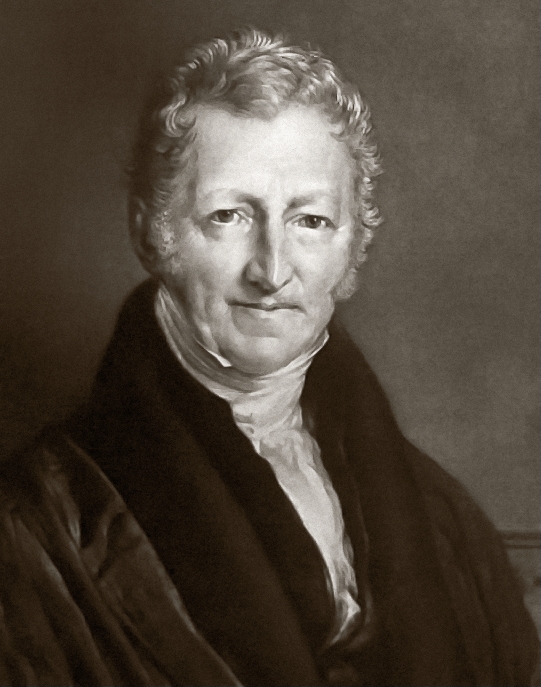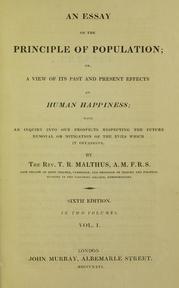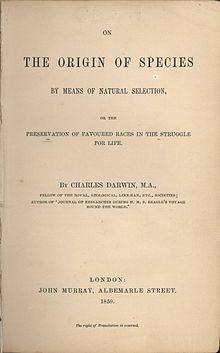 | ||||
Charles Darwin & Evolutionary Theory - Page 2
SPO VIRTUAL CLASSROOMS
Page last updated: 11/2015
Final Piece of the Puzzle: Thomas Malthus & Population
In 1798, Thomas Malthus, an English clergyman and economist, published "Essay on the Principles of Population."
 | ||||||
SPO is a FREE science education website. Donations are key in helping us provide this resource with fewer ads.
Please help!
(This donation link uses PayPal on a secure connection.)
PAGE 2 < Back to Page 1
End of Article
Thomas Robert Malthus
In this paper he explained that human populations will double every 25 years unless population growth is kept in check by a limited food supply.
In 1838, Darwin read Malthus' essay and came to realize that all plant and animal populations have this same potential to rapidly increase in number unless they are limited by biological and physical factors in the environment, such as predators, diseases, access to food and water, and other resources essential for survival.
Darwin’s readings on population dynamics were pivotal in spawning his discovery of natural selection as the mechanism for evolutionary change. Darwin realized that, in any given population, the individuals that are “most fit” (best adapted to a specific environment) are least likely to die of starvation and, therefore, most likely to pass on their traits to the next generation. In this way, over time, environmental factors can essentially mold the characteristics of a population.
Origin of Species
It wasn’t until 1858 that Charles Darwin and Alfred Wallace released a joint scientific paper introducing the concept of evolution by means of natural selection. This paper, along with Darwin’s subsequent publication, The Origin of Species On the Origin of Species by Means of Natural Selection, changed the way science and society explain the natural world.
You have FREE access to a large collection of materials used in a college-level introductory biology course. The Virtual Biology Classroom provides a wide range of free educational resources including PowerPoint Lectures, Study Guides, Review Questions & Practice Test Questions.
Sources & Resources
- Brown, Bryson (2007) Evolution: A Historical Perspective. Greenwood Press.
- Campbell & Reece (2005) Biology, 7th Edition. Pearson.
- Understanding Evolution website from University of California Museum of Paleontology.
- Evolution website from PBS.
- Fun Interactive Evolution Activity from the BBC's GCSE Bitesize.
- New NOVA Evolution website from PBS.
- Interactive Evolution Timeline from John Kyrk.
- Pre-Darwinian Evolutionary Theory, "Class Notes" from SPO.
- Evolution & Natural Selection, "Class Notes" from SPO.
- Role of Genetic Mutation in Evolution, "Class Notes" from SPO.
- "Darwinvaganza" Radiolab episode from WNYC.
- Charles Darwin Biography episode.
- Voyage of the Beagle, by Charles Darwin. Audio reading from LibriVox.
- "In Defense of Darwin" Radiolab episode featuring Richard Dawkins.




